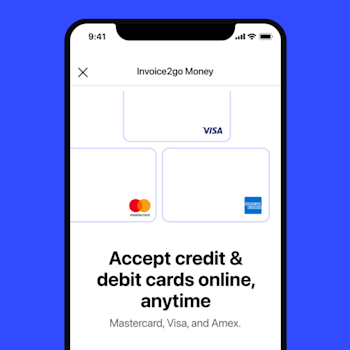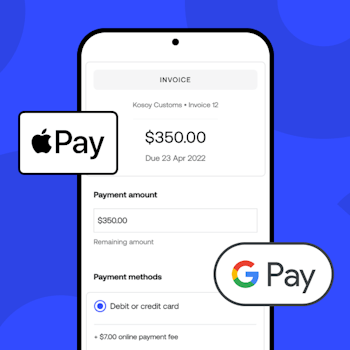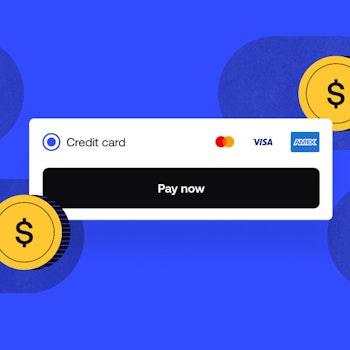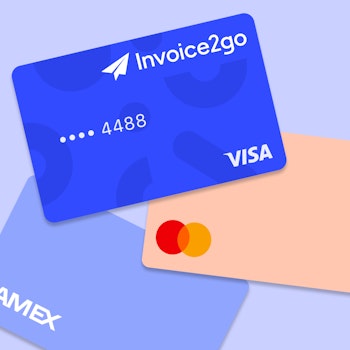
How to apply for the Paycheck Protection Program before the new May 31st deadline
With businesses starting to fully reopen in many places across the country, it’s likely your operations are ramping up. And while that’s great news, it also means that your business may have needs that require your attention very soon.
The Small Business Association (SBA) is accepting new applications for the Paycheck Protection Progrm (PPP) through May 31st. Whether this is your first or second round with the PPP, now’s the time to get your ducks in a row as the deadline marks the end of the program.
If the future of your business is uncertain because of operational issues related to COVID-19, the PPP is a way for you to retain your valued staff until some semblance of normalcy is regained.
This is all to say that the time to act is now. Getting your application in order now assures you’ll have a shot at your share of this $284 billion fund.
What Is The Paycheck Protection Program?
The paycheck protection plan is part of the Coronavirus Aid, Relief, and Economic Security (CARES) Act, a $2.2 trillion stimulus bill signed into law by Congress in March 2020. The paycheck protection aspect of the plan provided $669 billion in forgivable loans to eligible small businesses, corporations, and non-profit organizations to help keep their employees employed.
The latest round of PPP funding adds another $284 billion, not all of which has been claimed yet. Though the window closes on May 31st, there’s really no time to lose—and everything to gain. The sooner you get your application in, the sooner you get a little breathing room.
Soon, hopefully, we can all begin to focus on thriving, not just surviving.
What’s Different The Second Time Around?
The second round of PPP includes changes made to improve access to the program for small companies—specifically those with fewer than 20 employees—and businesses run by women, veterans, and minorities. These segments now have priority and the original program deadline has been extended from March 31st to May 31st.
In addition, the eligibility rules have changed for the second round, to provide more equity. It treats first-window differently from second-window applications, with the rules being a little stricter on your second dip, in order to help the hardest-hit businesses.
If you’re applying for the first time, the eligibility criteria are pretty simple. To qualify, your business should:
- Have been operational before February 15th, 2020 (for seasonal businesses, you must have been operational for a minimum of 12 weeks between February 15th, 2019, and February 15th, 2020.)
- Have fewer than 500 employees
- Not be a publicly-traded company
Ineligible companies include:
- Companies owned by undocumented foreign nationals
- Companies located in a foreign country
- Any company that has defaulted on a federal loan
- Private clubs that restrict memberships for reasons besides capacity
- Non-native government-owned entities
- Banks and lenders
- Speculative businesses (like investment companies, some mining operations, R&D, or real estate development)
- Companies engaged in illegal operations
- Organizations involved in political lobbying
- Businesses principally involved in promoting religion or that derive much of their income from selling products or performances of a sexual nature
If your company falls into one of these categories (or you’re not sure whether it does), you can access more specific eligibility information through the SBA. The SBA has also put together a FAQ document that might answer some of the more nuanced legal and eligibility questions you have.
How To Apply For A Loan Under The Paycheck Protection Plan
1. Calculate How Much You Can Apply For
Before you apply for PPP funding, you’ll need to figure out how much you’re eligible to receive.
- The basic calculation is your average monthly payroll cost, calculated from the previous years’ payroll and multiplied by 2.5.
- Food and accommodation industries will multiply their average by 3.5. All eligible businesses can apply to receive a maximum of $2 million.
- For seasonal businesses, the average payroll cost is calculated from any 12-week period between February 15th, 2019, and February 15th, 2020.
2. Gather Your Documents
You won’t have to put up any collateral for your loan because the SBA is backing it. However, you need to meet the requirements and provide supporting documentation for all eligible costs.
Good recordkeeping is always a plus here! Your bookkeeping software can generally provide this data easily. You’ll need:
- Payroll records
- Proof of payroll tax payments
- Related Payroll tax forms
- All records related to Form 1099-MISC
If you are an entrepreneur or solopreneur, you’ll need a completed Schedule C (profit or loss for business). If you don’t have one, you will have to do some forensic bookkeeping to calculate your net profit—which is what your PPP amount will be calculated from.
One caveat here, if you’re a sole proprietor with more than one business entity, you might have trouble obtaining PPP funds—and subsequently, forgiveness—if the companies aren’t independently separated for bookkeeping’s sake.
3. Fill Out The Forms
You can apply for PPP funding directly through the SBA or with an SBA-approved lender.
You’ll need to provide:
- All required business information and a tax ID.
- The amount of the loan you’re requesting (see LOAN CALCULATION in #1, above)
- Number of employees. This number must agree with your payroll reports. If you are a sole proprietor, you’ll enter one, not zero, in this field.
- Business start date, which must correspond with your Secretary of State filing.
- Industry category must be chosen from the menu. If you don’t see your exact business type, choose whatever is closest to it. The SBA will reject applications that leave this field empty.
- Owner information for any individual who has a 20% or more share in the business. This includes a front-and-back color copy of their valid driver’s license (meaning not expired) and date of birth for each owner.
Businesses must submit:
- 941 Quarterly Tax Filing or 944 Annual Tax Filing
- Payroll ledger for the past 12 months
- Bank statements for the previous 12-month period
- Business bank account statements
- Any supporting payroll documentation
If you’re self-employed or a 1099 independent contractor, you’ll need:
- Schedule C form 1040
- 1099s paid to you
- Income reports for 2019
- Expense reports for 2019
Take the time to put all these items together before you begin the application process. You’ll be able to upload documents directly to the application, so having them scanned and ready to go will help you get it done a lot faster.
4. What Happens Next?
Once you’ve submitted your application, the SBA will certify it before putting it into their lender marketplace. At this point, approved SBA lenders can accept and offer you a loan. Once this happens, you will be notified via email from the lender or the SBA partner.
When you receive your notification, be sure to read it carefully to find out what you need to do to complete the process. The lender has 10 days to finalize the transaction, although it is possible for them to request more time under certain circumstances. The rules around this time restriction have already changed several times to accommodate various scenarios, but in best practice, be sure you act immediately.
If approved, you will need to supply the lender with a voided check, so they know where to deposit the funds, and you’ll also have to sign the loan agreement that they provide. At any time, if you wish to withdraw your application, you can do so from within the application portal.
It should also be mentioned that you don’t have to go through the SBA or their partner to apply. If your bank is an approved SBA lender, you are welcome to apply through them directly. To save yourself time, explore your options before you begin the process and make decisions based on what’s best for your situation.
More Good News: Your PPP Loan Could be 100% Forgivable
The SBA administers PPP loans at an interest rate of 1%, with a five-year maturity date. You don’t need collateral or personal guarantees to apply, and neither the government nor the lenders charge any fees.
Additionally, you don’t have to make any payments on the loan until 10 months after your 24-week covered window. Only monies spent during that time are eligible to be forgiven.
Whether this is your first or second time applying for the PPP, you could be eligible for forgiveness of the entire amount of your loan if you meet specific criteria. If you qualify, the eligible portions of your loan—that is, the amounts you can prove you spent on eligible expenses—won’t have to be paid back. Forgiven amounts convert to a non-taxable grant.
It’s critical to note here that the SBA won’t grant forgiveness unless the standards are met. But with good record-keeping and a little effort on your part, you could essentially get the money you need without having to repay it at all—certainly a worthwhile endeavor any way you look at it.
How to Qualify for Forgiveness
To qualify for forgiveness, you’ll need to maintain both employee and compensation levels for the eight- to 24-week period after receiving the money. During that time, the money needs to be spent on payroll and associated (eligible) costs, and at least 60% of the funds must be spent on payroll.
Specifically, that means during the first 24 weeks after receipt of your funds, at least 60% of the funds must be spent on payroll and related expenses. Employee compensation must remain the same as it was in pre-pandemic times and not represent a salary reduction.
What’s Changed This Year?
This year’s updated guidelines make it a little easier for companies to apply for PPP loan forgiveness. In addition to spending 60% of the loan on payroll, the list of eligible expenses has broadened to include:
- Essential supplier costs
- Software expenditures
- Costs related to property repairs and maintenance due to damage from public protests
- PPE and barriers/upgrades intended to prevent or reduce virus transmission
There is also a simplified loan forgiveness form, especially for companies borrowing less than $150,000. All companies applying for second draw funds and forgiveness must prove a 25% reduction in year-over-year revenue.
Lastly, if you applied for and received an EIDL grant (also known as an SBA disaster grant), you’ll no longer have to deduct what you received through the grant from your forgiveness amount, meaning you can take full advantage of both programs while they’re around.
How To Apply For Loan Forgiveness
You’ll apply for forgiveness through your lender. You can access the forms through the SBA website or obtain them directly through your lender.
Some lenders might have internal application systems, but it’s essential to use the correct form. If the lender does not offer an internal form or web-based application, use either SBA Form 3508, SBA Form 3508EZ, or SBA Form 3508S. The EZ and S forms are simplified versions of the application, for which there are specific requirements. Speak to your lender to find out which one is most suitable for you.
You’ll also need to compile:
- Payroll information
- Bank statements to support your payroll
- Statements from your payroll service, if applicable
- Tax forms for the period covered
- Receipts or documentation for your portion of healthcare or retirement contributions
Other forgivable expenses you’ll need documentation for include:
- Mortgage and interest payments on business properties
- Rent or lease payments for the business property
- Utility payments related to the business property
Once submitted, your lender will advise you on what portion of the loan has been forgiven. You are still responsible for paying the remainder according to the original loan agreement.
Onwards!
There is no doubt that we’re living in strange and unique times. Our government has worked hard to provide small businesses with stimulus and relief packages that address our current challenges.
Any eligible company that has lost revenue because of COVID-19 is strongly encouraged to apply. Full loan forgiveness is possible, and even for non-forgivable amounts, you simply won’t find interest rates this low anywhere else.
For businesses already subscribed to Invoice2go, a Bill.com company, many of the documents you need for the application are readily available in reports. With just a few clicks, you’ll have most of the work done and be on your way to enjoying the benefits of the paycheck protection plan.
Related Articles

How to accept credit card payments on Invoice2go in 3 simple steps

Accept payments online via Apple Pay and Google Pay

Must-not-miss write-offs as you wrap up 2022 year-end finances

5 ways accepting credit and debit card payments helps your business stay resilient

4 easy ways to increase cash flow today

What is Small Business Saturday and why is it important?
The features and surprising benefits of a well-designed packing slip
